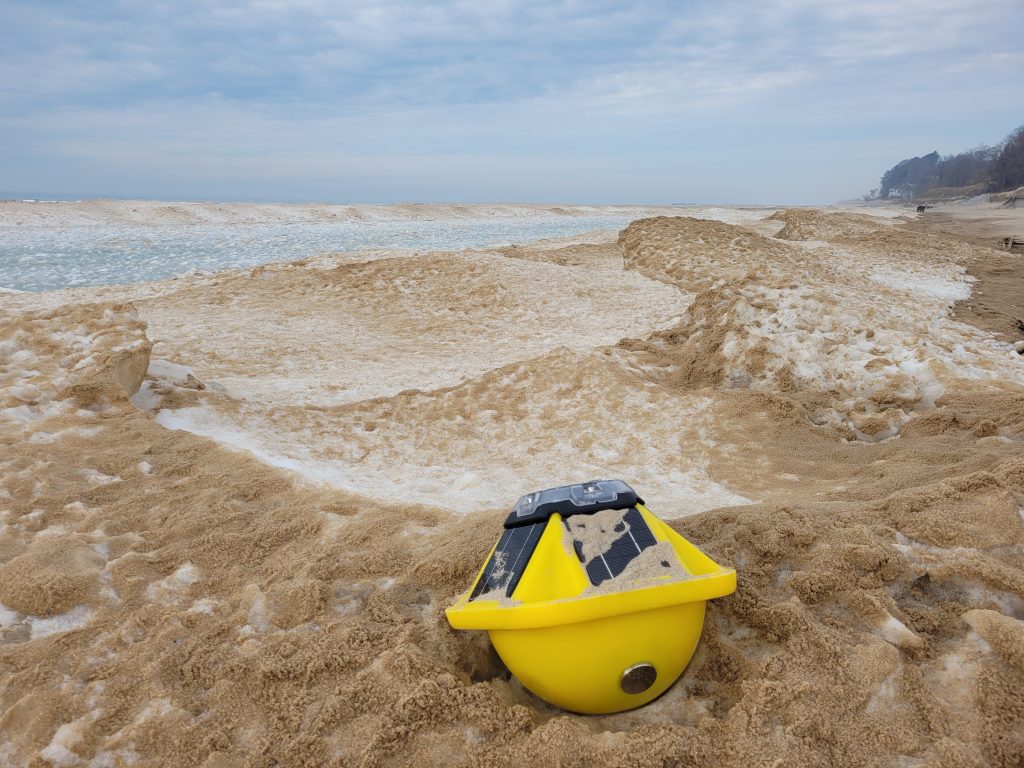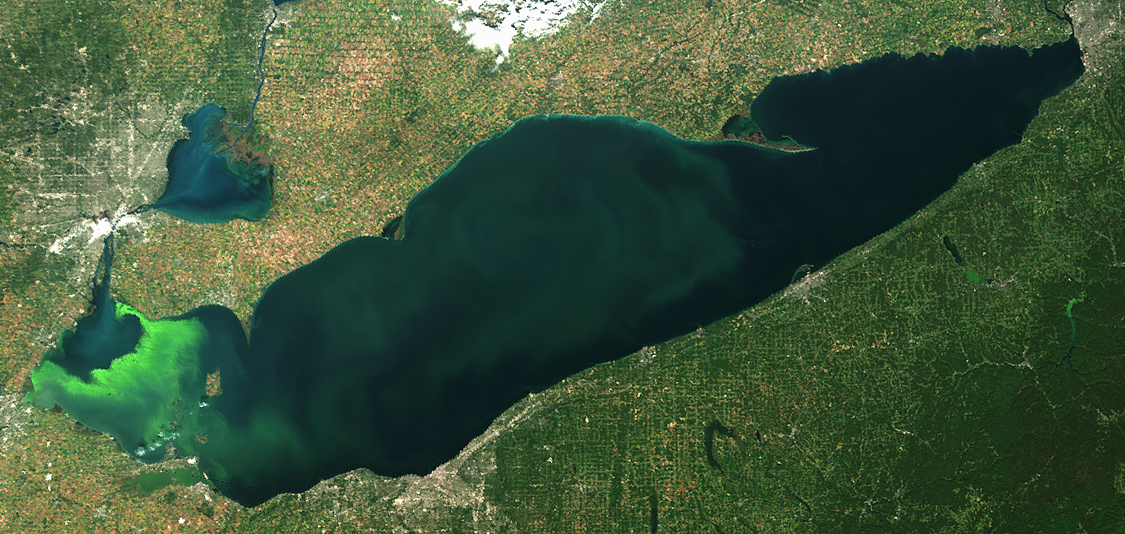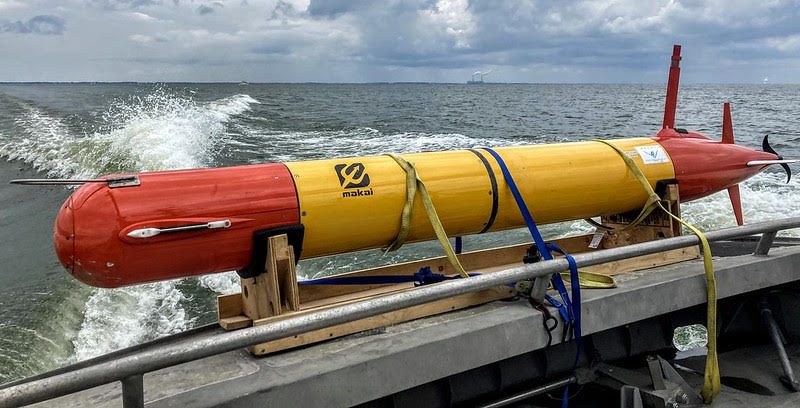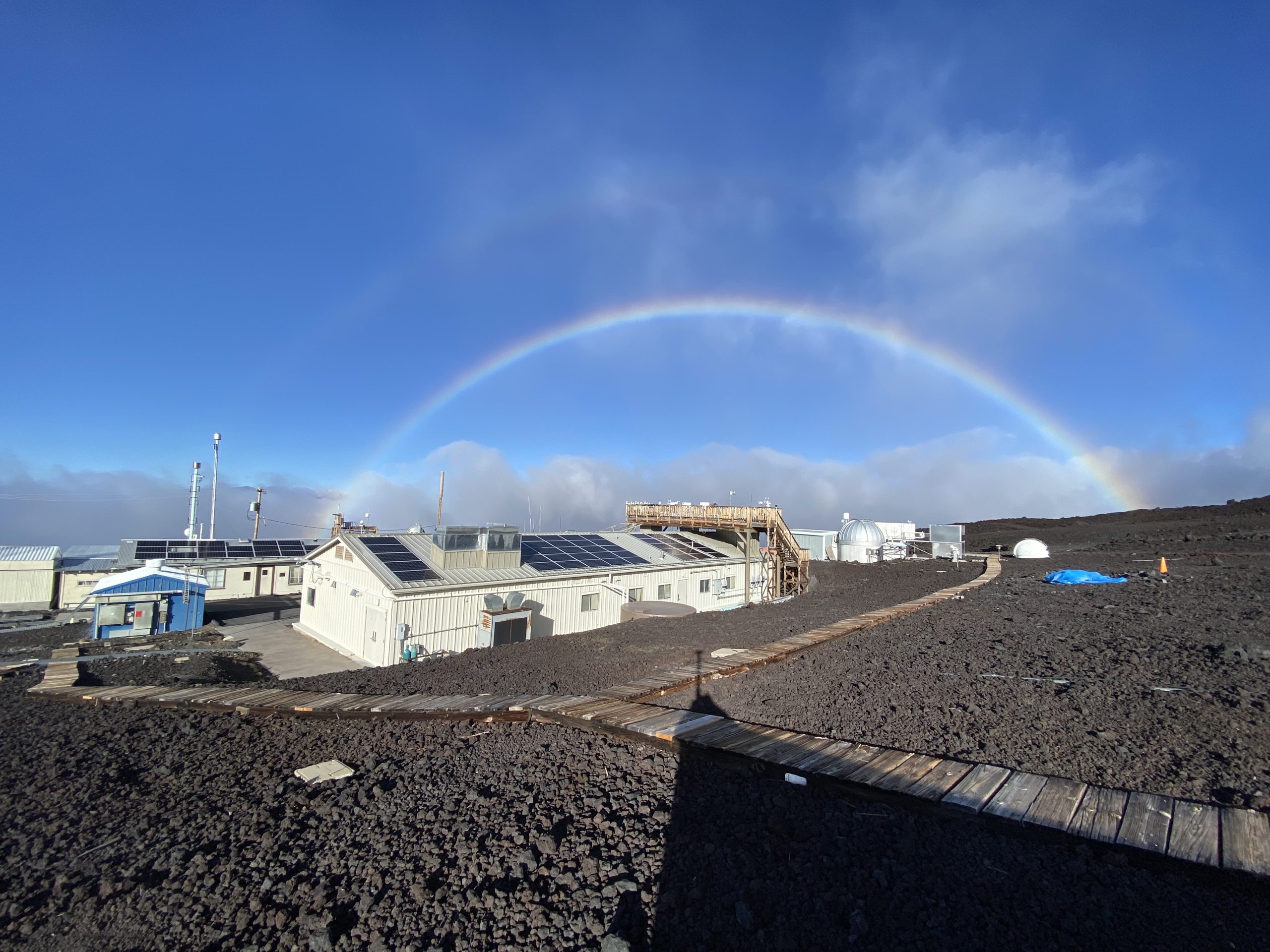For a long time now, scientists have wanted to know more about what happens under the ice of the Great Lakes each winter, but getting the data has always been extremely challenging or almost impossible in this region. Most buoys must be pulled out and carefully stored away in winter to avoid damage, most research ships are not built to break through the frozen water surface, and older precision instruments were not able to operate at low temperatures. But over the last few years, NOAA’s Great Lakes Environmental Research Laboratory has been working to develop new tools that may provide a fresh glimpse into the season.

New winter-ready buoy on the ice, surrounded by sand from the shore of Lake Michigan Credit: NOAA/Russ Miller
“These new tools, built with some of our industry partners, may finally help us close the knowledge gap about winter,” said Steve Ruberg, who leads NOAA’s Meteorological Real-Time Coastal Observation Network. “Information about the biological processes happening in the cold season may help us better understand some of our most important fisheries and prepare for summer events such as harmful algal blooms.”
New robotic vehicles built for cold
A new autonomous vehicle uses an acoustic imaging system to gather data that can be transmitted into the lab’s observing network. The unit can be operated remotely, but during initial tests it was also able to autonomously dock itself at a pier, using acoustic beacons to confirm its location. It can also successfully recharge its battery from a hydrogen fuel cell, marking the first time a robotic vehicle like this had ever used that type of power source. This means the vehicle could stay underwater for the entire year, no matter how long the ice lasts.
In future winter seasons, Ruberg and his team hope to begin using the research vehicle to collect data about water quality, life at the bottom of the lakes, and fish and zooplankton. It could also potentially be used to investigate or respond to oil spills in various locations. Water intake managers in the Western Basin of Lake Erie have also been using data from the observing network to monitor for the development of harmful algae and other issues that might impact drinking water systems in cities such as Toledo.
Year-round weather buoys surface new data
Until about five years ago, all buoys in the Great Lakes had to be pulled out of the water each winter because ice accumulation and high winds could damage them, making them inoperable. But since 2018, Ruberg’s team has been developing and deploying new, more durable buoys and cabled observing systems that can withstand the low temperatures and ice conditions that arrive each December and often last until March or April.
The new buoys can stay out year round, delivering data about surface conditions that are now used by the National Weather Service marine weather forecasters to validate models and provide insight into current conditions such as rip current events. Commercial freighters and the general public are using them too, to get navigation and fishing information.
“These new tools are exciting because they will help us understand these large inland seas we call the Great Lakes,” Ruberg said. “And they could eventually be used in other extremely cold locations, such as the Arctic.”
Media Contact: Alison Gillespie, alison.gillespie@noaa.gov, 202-713-6644



